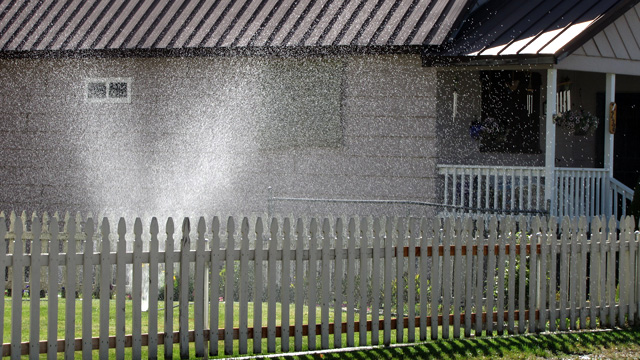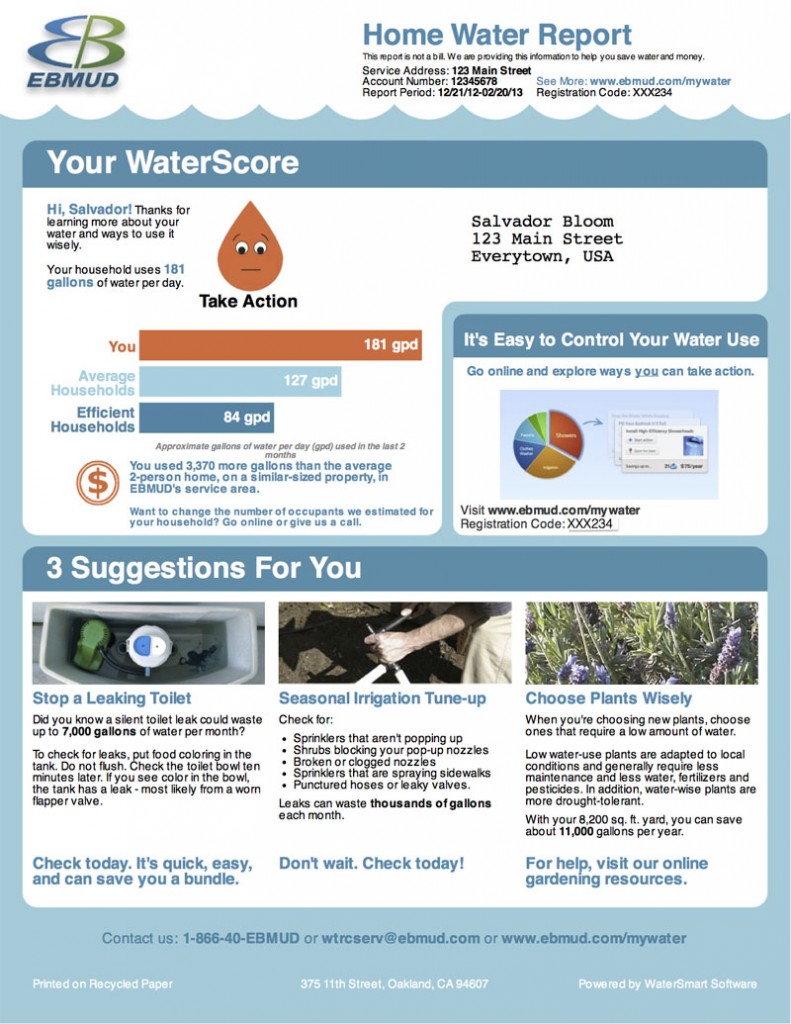
The record dry weather means California water districts are ramping up conservation programs.
The East Bay Municipal Utility District is encouraging some of its customers to use less by having them compete with their neighbors.
About 10,000 EBMUD customers have been getting personalized reports in the mail over the past year, summarizing their water use and comparing it to the consumption of similar households in the area.
“It puts it into a context,” says Richard Harris, water conservation manager at EBMUD. “Like: for similar households with three-to-four people and with a [property] lot of this size in this zip code, this is how you compare. It creates an awareness of a benchmark.”
The comparison is done anonymously – no neighbors are outed by name — but Harris says the small dose of peer pressure seems to work. An independent review of the program found customers who got the information cut their water use by five percent.

“We were targeting two percent,” says Harris. “So five percent is a pretty good savings rate. Compare that to conservation incentives where you’re enticing someone to buy something. If you can do it through behavioral science, it’s much more cost-effective.”